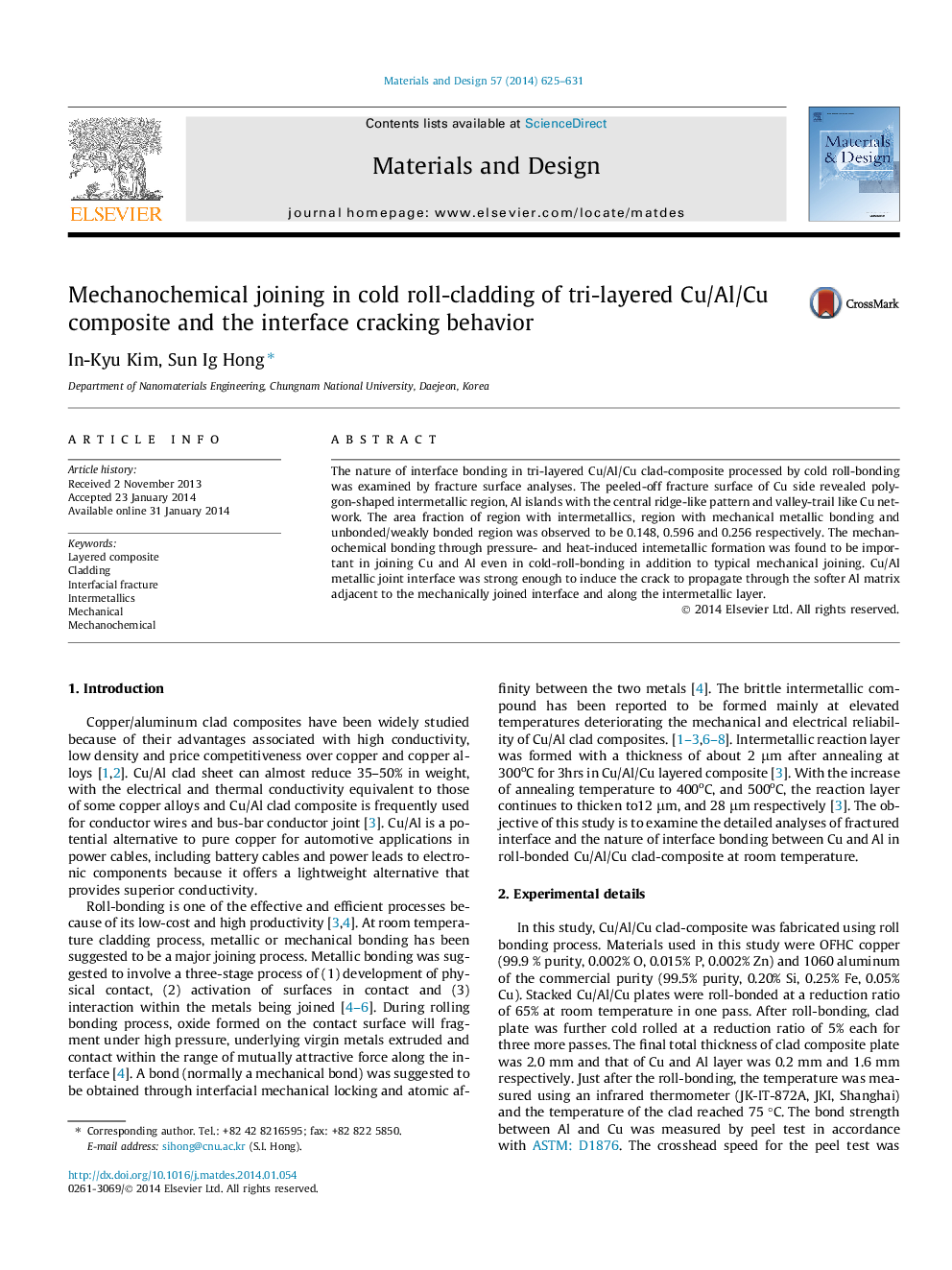| Article ID | Journal | Published Year | Pages | File Type |
|---|---|---|---|---|
| 829388 | Materials & Design (1980-2015) | 2014 | 7 Pages |
•The nature of interface bonding in Cu/Al/Cu clad was examined by fracture analyses.•Mechanochemical bonding plays an important role in joining Cu/Al at room temperature•Interface strength is dependent on the area fraction of various bonding natures.•Cu/Al interface was strong enough to induce the crack through the softer Al matrix.•The design and control of the area fraction of specific bonding is important.
The nature of interface bonding in tri-layered Cu/Al/Cu clad-composite processed by cold roll-bonding was examined by fracture surface analyses. The peeled-off fracture surface of Cu side revealed polygon-shaped intermetallic region, Al islands with the central ridge-like pattern and valley-trail like Cu network. The area fraction of region with intermetallics, region with mechanical metallic bonding and unbonded/weakly bonded region was observed to be 0.148, 0.596 and 0.256 respectively. The mechanochemical bonding through pressure- and heat-induced intemetallic formation was found to be important in joining Cu and Al even in cold-roll-bonding in addition to typical mechanical joining. Cu/Al metallic joint interface was strong enough to induce the crack to propagate through the softer Al matrix adjacent to the mechanically joined interface and along the intermetallic layer.
